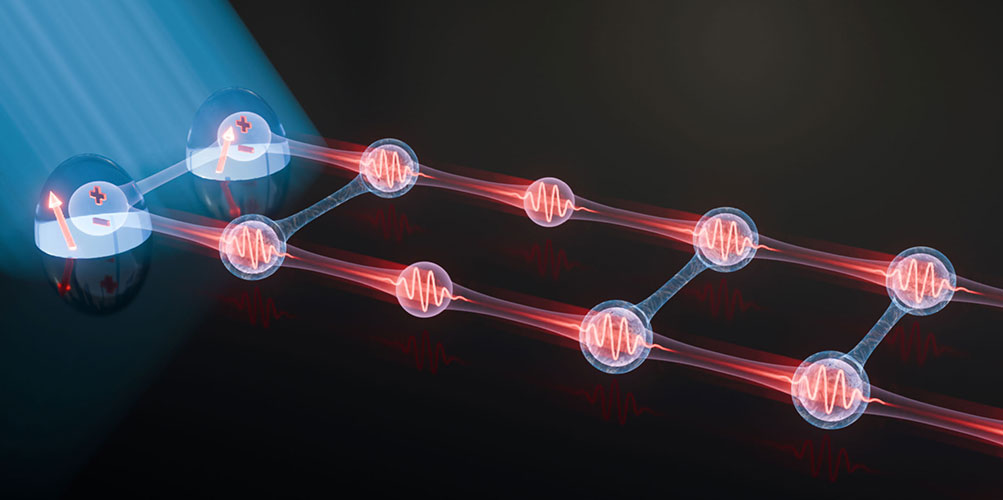ERC Synergy Grant for research into quantum-based light
A research team at the Department of Physics at the University of Basel has been awarded a prestigious Synergy Grant from the European Research Council (ERC). Together with partners in Bochum and Copenhagen, the team is developing scalable units based on entangled light particles for quantum computing.
06 November 2025
Light consists of photons, which play an important role in quantum technology due to their unique properties. For instance, photons can transmit information reliably over long distances, making them essential for quantum communication. They are also used in quantum computing, where they serve as qubits for information processing.
Current approaches use individual photons at the inputs of a chip. “However, this approach faces considerable hurdles when many qubits are used instead of just a few. This is because the hardware requirements increase enormously with the number of qubits,” says Professor Richard J. Warburton from the Department of Physics at the University of Basel.
New generation of entangled particles
The ERC-funded project “Photon-based scalable quantum information science” (PHOQUS) aims at creating so-called photonic resource states to enable significantly improved scaling. The resources states consist of at least three photons that are entangled with each other. The PHOQUS team’s project aims to develop a new generation of these resource states that are compatible with conventional chips.
The interdisciplinary approach of the three partners combines the expertise of the participating groups in materials science, semiconductor physics, quantum optics, and quantum information theory.
The resource states will be created by nano-sized semiconductors, known as quantum dots. They will be developed by researchers at Ruhr University Bochum. The group led by Professor Warburton from the Swiss part of the team will test these novel semiconductors and build the first prototypes. The researchers at the University of Copenhagen will build advanced devices and will establish the theoretical basis for their control.
Key factor for quantum technologies
Making photonic quantum technologies more scalable is a key factor in developing quantum communication and quantum computing. With PHOQUS, the team is addressing the technical and conceptual challenge of efficiently generating resource states and feeding them directly into photonic chips.
If the project team is successful, their developments could enable fundamental advances in quantum technology, opening up new avenues in secure communication and quantum computing.
The ERC Synergy Grant is awarded as part of the European Union’s Horizon Europe program for cutting-edge research. The funding for PHOQUS amounts to around 11.5 million euros, of which around 2.5 million euros will go to Basel. For the University of Basel, this success is strong evidence of its excellence in quantum research.



